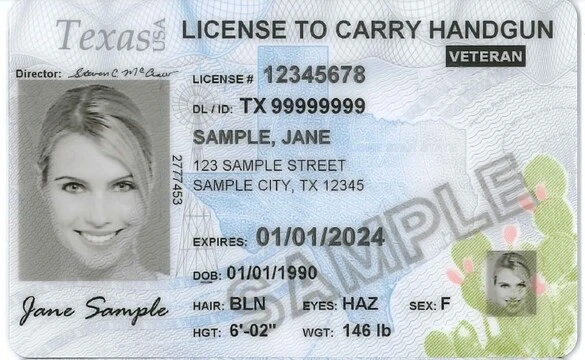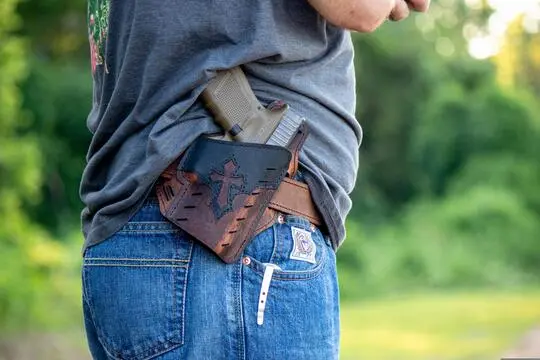Bill Text
| 89R2369 MLH-F | ||
| By: Swanson | H.B. No. 1617 | |
|
|
||
|
|
||
| relating to exempting the intrastate manufacture of a firearm, a | ||
| firearm accessory, or ammunition from federal regulation. | ||
| BE IT ENACTED BY THE LEGISLATURE OF THE STATE OF TEXAS: | ||
| SECTION 1. The Legislature of the State of Texas finds that: | ||
| (1) The Tenth Amendment to the United States | ||
| Constitution reserves to the states and the people all powers not | ||
| granted to the federal government elsewhere in the constitution, as | ||
| those powers were understood at the time that Texas was admitted to | ||
| statehood in 1845. The guaranty of those powers is a matter of | ||
| contract between the state and people of Texas and the United States | ||
| dating from the time Texas became a state. | ||
| (2) The Ninth Amendment to the United States | ||
| Constitution guarantees to the people rights not enumerated in the | ||
| constitution, as those rights were understood at the time Texas | ||
| became a state. The guaranty of those rights is a matter of contract | ||
| between the state and people of Texas and the United States dating | ||
| from the time Texas became a state. | ||
| (3) The regulation of intrastate commerce is vested in | ||
| the states under the Ninth and Tenth Amendments to the United States | ||
| Constitution if not expressly preempted by federal law. The United | ||
| States Congress has not expressly preempted state regulation of | ||
| intrastate commerce relating to the manufacture on an intrastate | ||
| basis of firearms, firearms accessories, and ammunition. | ||
| (4) The Second Amendment to the United States | ||
| Constitution guarantees the right of the people to keep and bear | ||
| arms, as that right was understood at the time Texas became a state. | ||
| The guaranty of that right is a matter of contract between the state | ||
| and people of Texas and the United States dating from the time Texas | ||
| became a state. | ||
| (5) Section 23, Article I, Texas Constitution, secures | ||
| to Texas citizens the right to keep and bear arms. That | ||
| constitutional protection is unchanged from the date the | ||
| constitution was adopted in 1876. | ||
| SECTION 2. The Legislature of the State of Texas declares | ||
| that a firearm, a firearm accessory, or ammunition manufactured in | ||
| Texas, as described by Chapter 2003, Business & Commerce Code, as | ||
| added by this Act, that remains within the borders of Texas: | ||
| (1) has not traveled in interstate commerce; and | ||
| (2) is not subject to federal law or federal | ||
| regulation, including registration, under the authority of the | ||
| United States Congress to regulate interstate commerce. | ||
| SECTION 3. Title 99, Business & Commerce Code, is amended by | ||
| adding Chapter 2003 to read as follows: | ||
| CHAPTER 2003. INTRASTATE MANUFACTURE OF A FIREARM, A FIREARM | ||
| ACCESSORY, OR AMMUNITION | ||
| Sec. 2003.001. DEFINITIONS. In this chapter: | ||
| (1) "Firearm accessory" means an item that is used in | ||
| conjunction with or mounted on a firearm but is not essential to the | ||
| basic function of a firearm. The term includes a telescopic or laser | ||
| sight, magazine, flash or sound suppressor, folding or aftermarket | ||
| stock and grip, speedloader, ammunition carrier, and light for | ||
| target illumination. | ||
| (2) "Generic and insignificant part" means an item | ||
| that has manufacturing or consumer product applications other than | ||
| inclusion in a firearm, a firearm accessory, or ammunition. The | ||
| term includes a spring, screw, nut, and pin. | ||
| (3) "Manufacture" includes forging, casting, | ||
| machining, or another process for working a material. | ||
| Sec. 2003.002. MEANING OF "MANUFACTURED IN THIS STATE." (a) | ||
| For the purposes of this chapter, a firearm, a firearm accessory, or | ||
| ammunition is manufactured in this state if the item is | ||
| manufactured: | ||
| (1) in this state from basic materials; and | ||
| (2) without the inclusion of any part imported from | ||
| another state other than a generic and insignificant part. | ||
| (b) For the purposes of this chapter, a firearm is | ||
| manufactured in this state if it is manufactured as described by | ||
| Subsection (a) without regard to whether a firearm accessory | ||
| imported into this state from another state is attached to or used | ||
| in conjunction with it. | ||
| Sec. 2003.003. NOT SUBJECT TO FEDERAL REGULATION. (a) A | ||
| firearm, a firearm accessory, or ammunition that is manufactured in | ||
| this state and remains in this state is not subject to federal law | ||
| or federal regulation, including registration, under the authority | ||
| of the United States Congress to regulate interstate commerce. | ||
| (b) A basic material from which a firearm, a firearm | ||
| accessory, or ammunition is manufactured in this state, including | ||
| unmachined steel and unshaped wood, is not a firearm, a firearm | ||
| accessory, or ammunition and is not subject to federal regulation | ||
| under the authority of the United States Congress to regulate | ||
| interstate commerce as if it actually were a firearm, a firearm | ||
| accessory, or ammunition. | ||
| Sec. 2003.004. EXCEPTIONS. This chapter does not apply to: | ||
| (1) a firearm that cannot be carried and used by one | ||
| person; | ||
| (2) a firearm that has a bore diameter greater than 1.5 | ||
| inches and that uses smokeless powder and not black powder as a | ||
| propellant; | ||
| (3) ammunition with a projectile that explodes using | ||
| an explosion of chemical energy after the projectile leaves the | ||
| firearm; or | ||
| (4) any firearm that is capable of shooting more than | ||
| two shots automatically, without manual reloading, by a single | ||
| function of the trigger. | ||
| Sec. 2003.005. MARKETING OF FIREARMS. A firearm | ||
| manufactured and sold in this state must have the words "Made in | ||
| Texas" clearly stamped on a central metallic part, such as the | ||
| receiver or frame. | ||
| Sec. 2003.006. ATTORNEY GENERAL. On written notification | ||
| to the attorney general by a United States citizen who resides in | ||
| this state of the citizen's intent to manufacture a firearm, a | ||
| firearm accessory, or ammunition to which this chapter applies, the | ||
| attorney general shall seek a declaratory judgment from a federal | ||
| district court in this state that this chapter is consistent with | ||
| the United States Constitution. | ||
| SECTION 4. This Act applies only to a firearm, a firearm | ||
| accessory, as that term is defined by Section 2003.001, Business & | ||
| Commerce Code, as added by this Act, or ammunition that is | ||
| manufactured on or after the effective date of this Act. | ||
| SECTION 5. This Act takes effect immediately if it receives | ||
| a vote of two-thirds of all the members elected to each house, as | ||
| provided by Section 39, Article III, Texas Constitution. If this | ||
| Act does not receive the vote necessary for immediate effect, this | ||
| Act takes effect September 1, 2025. | ||
Educational Freedom
Maintaining control over educational curriculum regarding firearms in Texas ensures that students receive accurate and relevant training.
Aligning Local Courses with Unique Needs
Local courses should align with the unique needs and circumstances of Texas residents, taking into account regional differences and cultural factors.
Economic Support for Local Manufacturing
Stimulating local economies by encouraging growth in firearm manufacturing within Texas can lead to increased revenue and job creation.
Ensuring Revenues Stay Within the State
A greater portion of revenues generated from firearm manufacturing should stay within the state, supporting local businesses and communities.
Preservation of Individual Rights
Upholding and protecting Second Amendment rights through local regulation is crucial for safeguarding individual freedoms.
Safeguarding Against Federal Overreach
Local regulation can help prevent federal regulations from infringing on Texas citizens' rights, ensuring that the government does not overstep its authority.
Safety and Responsible Ownership
Emphasizing safety and responsible gun ownership practices is essential for maintaining public trust and confidence in the firearm industry.
Teaching Principles Without External Mandates
Teaching these principles without external mandates allows local authorities to shape their own approach to firearms education, tailored to their unique context.
State Sovereignty vs. Federal Supremacy
Assertion of state sovereignty over firearm regulation under the Tenth Amendment is crucial for preserving individual rights and preventing federal overreach.
Traditional Powers Reserved to States
The Tenth Amendment reserves certain powers traditionally held by states, including the authority to regulate intrastate activities such as firearm production.
Texan Analysis
Empowering local manufacturing and job creation within Texas fosters self-sufficiency and independence among Texans.
Protection of Individual Rights and Economic Growth
Safeguarding individual rights and promoting economic growth through increased manufacturing and job creation in firearm-related industries is a key objective.
Local Autonomy and Governance
Championing principles of local autonomy and decision-making authority allows states to regulate intrastate activities independently of federal mandates.
Conclusion
A careful balance between preserving individual rights, supporting local economies, and ensuring public safety must be struck in any regulatory approach.



